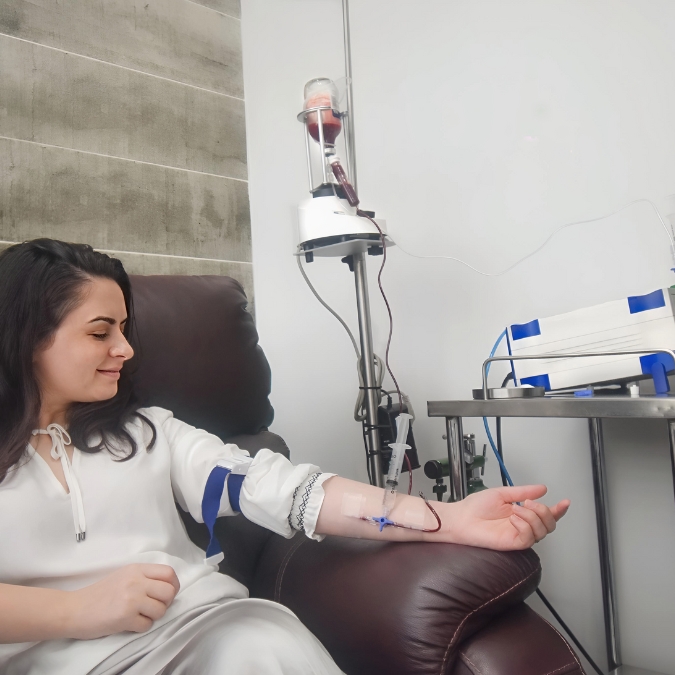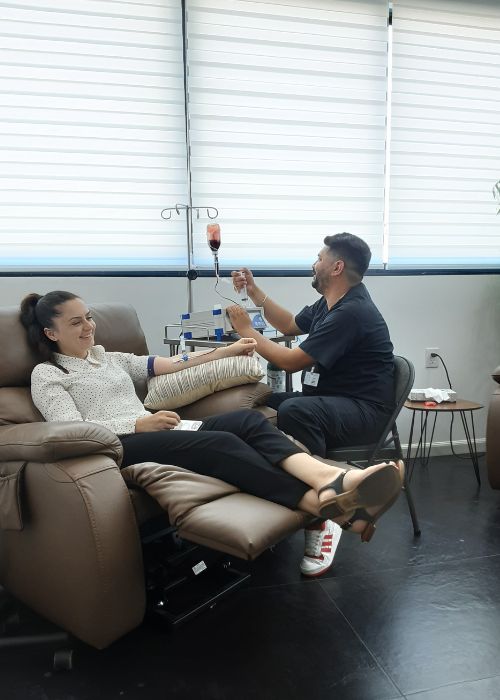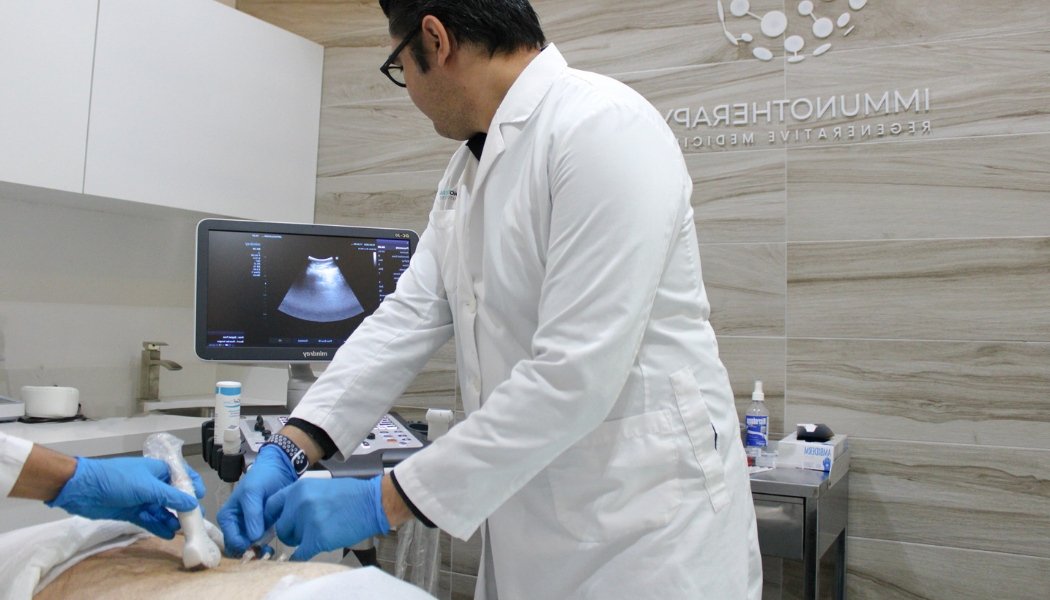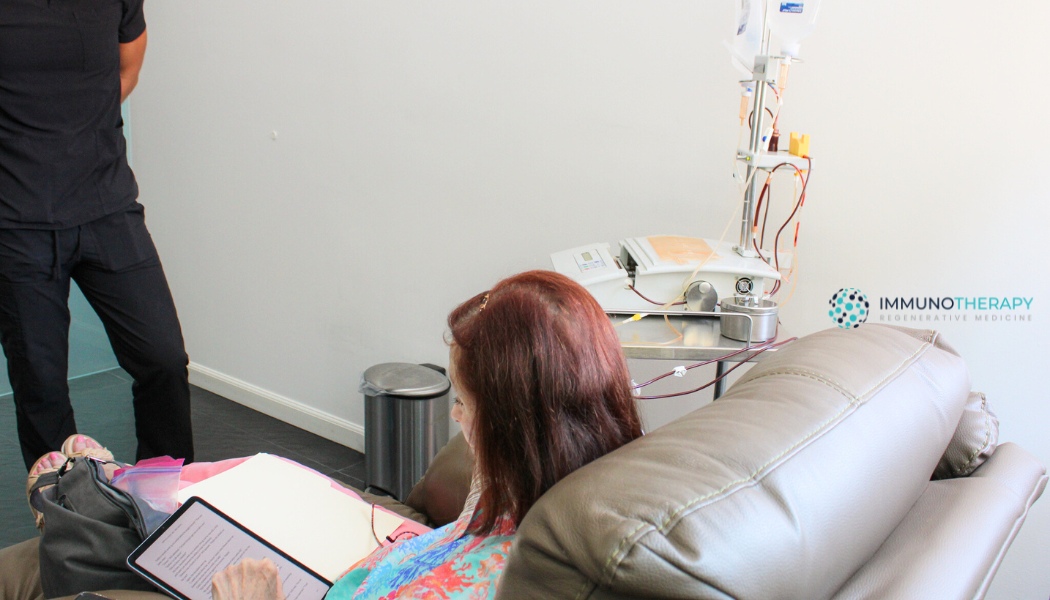Ozone Therapy
Improve your health and well-being
Ozone Therapy
This procedure helps alleviate many health disorders, prevent infections, treat various diseases, and improve overall quality of life.
The minimally invasive treatment uses ozone molecules to increase oxygenation levels in different tissues. Ozone therapy helps boost energy by activating the Krebs cycle at a cellular level, eliminates infectious processes, neutralizes select free radicals, and enhances the body’s regeneration process.
Some of the conditions we treat include:
- Infected Wounds
- Circulatory Disorders
- Geriatric Conditions
- Macular Degeneration
- Viral Diseases
- Arthritis

10-Pass Ozone Therapy
The 10-Pass is a form of Ozone therapy in which a larger amount of ozone is applied to a big volume of blood. This process allows better transportation of oxygen from the blood and through the body, it also has an antiseptic effect and allows the cells to create more energy for metabolic processes.
The appliance of ozone is done via 10 cycles. The process is done in a closed circuit, which prevents bleeding or the introduction of any harmful agents.
How Oxygen Treatments Work
For Disease and Detoxification
Oxygen in treatments has been used in medicine for over a century. Doctors recognized that oxygen is an effective killer of harmful toxins, viruses, bacteria, and cells, including cancerous cells. Medical ozone is also one of nature’s most effective antioxidants.
As a result, today, it’s used worldwide for many types of disorders, including inflammatory bowel disease, ulcerative colitis, burns, ulcers, wound infections, vascular disease, viral diseases, cancers, and more. Additionally, medical ozone helps decrease inflammation found in tumor markers and may assist cancer therapies.
This treatment also helps increase blood circulation to aid the body’s many functions. By combining ozone therapy with detoxification methods and other tailored treatments, patients may see many health benefits faster than expected.

Ozone Therapy For Cancer
Cancer cells with low oxygen are typically less sensitive to treatments like chemotherapy and radiation, and the lack of oxygen in tumors may drive cancer growth. Some studies show that ozone therapy increases the oxygen levels in tumors and may lead to better cancer treatments.
Ozone therapy can also help target and destroy cancerous cells, plus oxidize toxins that may be the cause of the disease. While chemotherapy is immune-suppressive and radiation may be harmful, ozone therapy is a safe option for targeting many types of conditions and helping to prevent recurrences.





